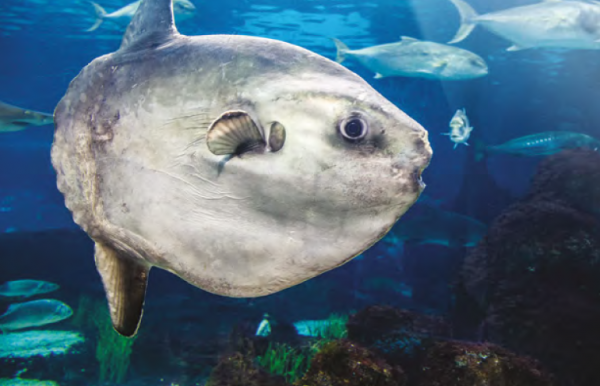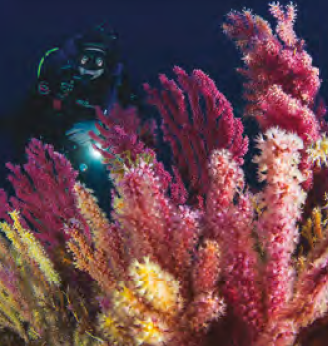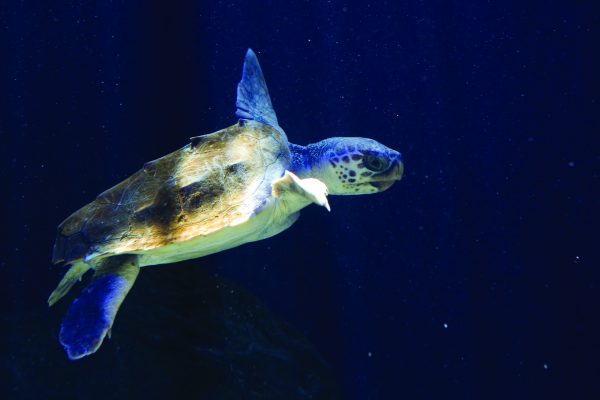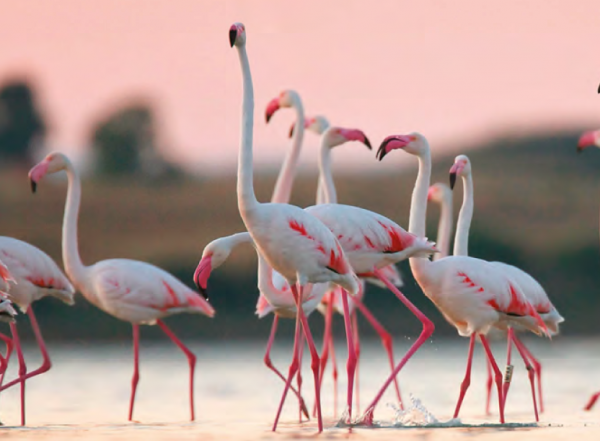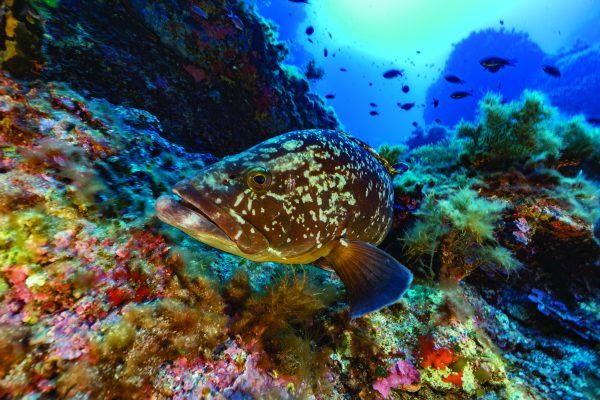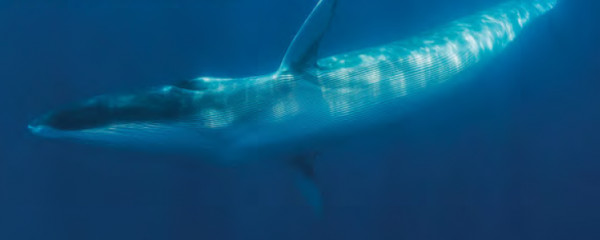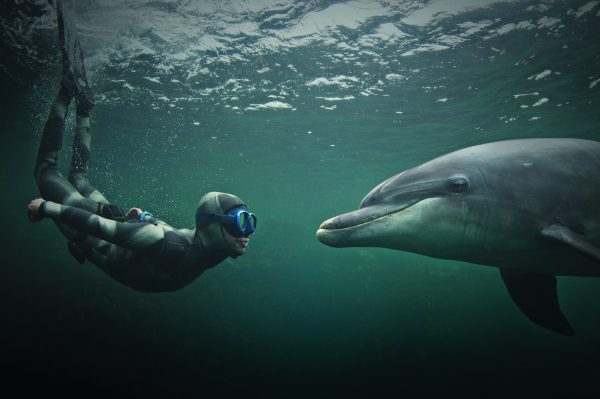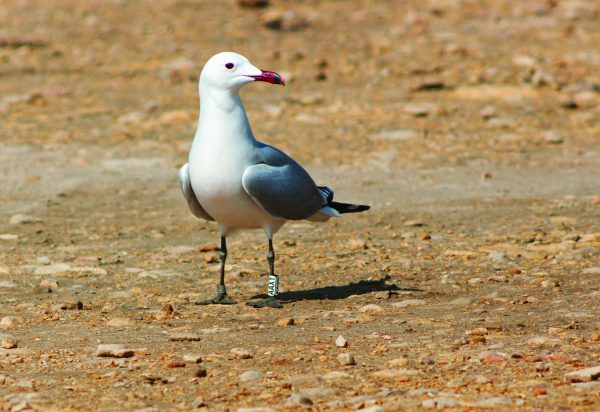The seas around Italy are teeming with life and its coastline boasts a thrilling array of natural wonders. Jenny Oldaker explores a few of its highlights…
All images © Getty Images unless otherwise stated
With a coastline of 7,600km (including islands), the sea has always been hugely important to Italy, helping the country maintain healthy trade links and providing vital sustenance through the ages. For wildlife lovers, the thriving coasts of the Italian peninsula also offer a bounty of wonderful sights, and their diverse habitats are home to myriad species. There are plenty of ways to enjoy the creatures that live around Italy’s shores, whether your tastes run to a boat trip looking for whales and dolphins, or you prefer getting up close and personal with the ocean on a diving expedition.
For this feature, we’ve focused on ten remarkable creatures of the Italian coast, having spoken to people with first-hand knowledge of these animals. The inescapable fact is that today many of these species face mounting threats to their populations. But by using ethical operators with a responsible ethos when we travel, and by learning more about the remarkable world below those crystal waters, we can take an important first step in helping these incredible creatures.
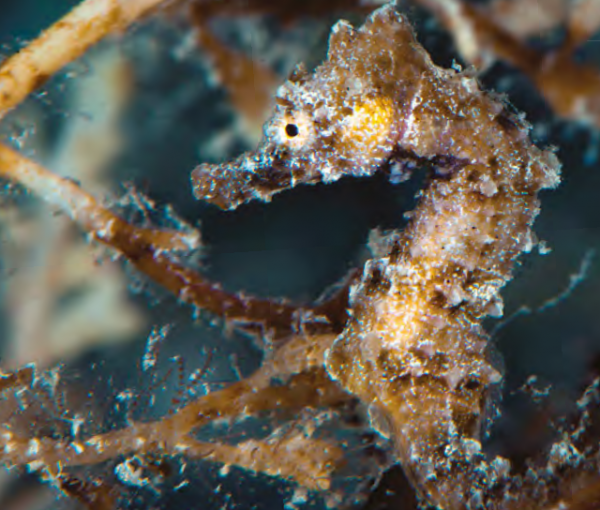
1. The Seahorse
Seahorses can be found in several places around the Italian coast. Sadly, factors such as rising pollution levels and the capture of seahorses for aquariums, medicine and souvenirs have contributed to a steep decline in numbers worldwide. But there are places where these creatures are thriving. One of these is off the coast of Marina di Gioiosa Ionica in Calabria. Roberta Eliodoro, scuba diving deeper, to 12-40 metres, when the water cools.” to spot more than just one or two: “On some dives – even quite brief, narrow-range ones – we’ve seen more than 15-20 specimens,” says Roberta. “Many biologists and underwater photographers come here to see these wonderful animals, so I feel very lucky to live here, as I can see them every day!”
2. The Ocean Sunfish
One fascinating fish that can often be spotted close to the surface of the water, especially in the summer months, is quite unmistakable with its huge, rounded shape and large, almost backward-looking fins. “We have a large number of interesting underwater creatures around the Italian coast,” says Riccardo Buralli of Diving in Elba. “But one of the most strange is the mola mola, or ocean sunfish, to give it its English name. This is a really mysterious creature, as few studies have been made on this fish. It can live in any part of the world except really cold oceans and can exceed two metres in size.” With its immense size and strange appearance, the ocean sunfish is always an exciting find for snorkellers and divers, but it can sometimes also be spotted from a boat, or even from the shore, sunbathing close to the surface with its shark-like dorsal fin protruding from the water.
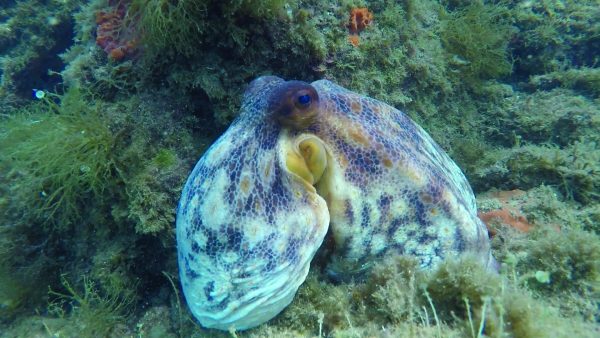
3. The Octopus
There are a lot of crazy looking creatures below the sea and, with its bulbous head, eight arms and ability to change colour to camouflage itself, the octopus is up there with the weirdest! If you want to see one in its natural environment, you’ll have to head beneath the waves on a snorkelling or diving adventure – there are a number of locations where you could glimpse an octopus around the Italian coast, stretching from northern waters to the seas around Sicily and the south of the Peninsula. During the 2020 coronavirus lockdown in Italy, an octopus was even spotted in the Venetian canal after tourist activity and boats stopped churning up the waters and turned them clear!
These intelligent creatures spend much of their time hiding in small spaces – divers may spot one in a rocky crevice, or you may be lucky enough to see one on the move, either slithering along the seabed or shooting along via its dramatic method of jet propulsion!
4. The Violescent Sea Whip
Although it looks like a plant, violescent sea whip is a species of colonial soft coral and actually belongs to the animal kingdom. Colonies of it make for an enchanting underwater spectacle, and one of the best places to see it, according to Roberta Eliodoro, is the so-called ‘La Montagne’ of Scilla, in the Strait of Messina, off the coast of Calabria and Sicily: “This is considered to be one of the most beautiful dive spots in the Mediterranean Sea,” she explains. “It is famous for its morphological scenery and for its ‘forest’ of big yellow and red gorgonians – colonies of violescent sea whip, Paramuricea clavata.” The large, fan-shaped colonies of this coral are either male or female and can reach up to one metre high and one metre across. The best time to see them is in early summer.
5. The Sea Turtle
Three of the seven species of sea turtles are present in Italian waters – the green turtle, loggerhead turtle and leatherback turtle. All are classified as endangered, but the loggerhead is the most common in this part of the world. These fascinating creatures need our help, and some Italians have made incredible steps in that direction. Daniela Freggi, determined to help these animals, founded Lampedusa Turtle Rescue in 1996, and today her centre has saved over 6,000 turtles, carried out more than 2,000 surgeries and developed important new medical techniques. But in the face of growing threats there is ever more to be done – not just on behalf of the turtles, but for the part they play in the wider ecosystem: “We forget that sea turtles are another of the few species that eat jellyfish, so the good health of ocean rests in their survival,” explains Daniela. “It is important to save turtles, not only for their biological value, or because they are interesting and amazing, but to help future generations.”
6. The Flamingo
Some animals are instantly iconic and it’s easy to see why the flamingo is one such beast. These leggy pink birds make for an arresting sight, not least when they’re flocked together, creating a giant rosy haze on the water. They look even more striking in flight, enormous neck and legs stretched to gravity-defying effect!
If you want to see wild flamingos in Italy, there are a number of places to find them if you visit at the right time of year (which is from spring to autumn), from the island of Torcello in the Venetian Lagoon to the lagoons of Comacchio (Emilia Romagna) and Orbetello (Tuscany). The coasts of Sicily (try Vendicari) and Sardinia (especially San Teodoro and Molentargius) tend to be a good bet for flamingos too. And even when seen from a distance, with their height and vibrant plumage, these graceful birds still create a magical spectacle.
7. The Dusky Grouper
This solitary fish creates an unforgettable spectacle for underwater explorers, thanks to its large size (up to 1.5 metres), distinctive and prehistoriclooking features. Favouring depths of at least 8 metres, it is generally divers who are most likely to spot the dusky grouper, which is an important and popular species living in rocky coastal habitats and can be found around much of Italy’s coastline.
Although this greedy fish is a voracious predator, groupers like this are not a threat to humans (though the reverse is not true) as they feed mainly on crabs, octopuses and reef fish. One of the most fascinating characteristics of the dusky grouper is that these fish begin their adult life as females but as they grow larger and older they develop into males. This gender change depends on the age and size of the fish, but usually occurs at around 12 years old.
8. The Fin Whale
Did you know you can see the world’s second largest mammal off the coast of Italy? The majestic fin whale can be spotted in various locations, and there is a resident population in the protected Pelagos Sanctuary, in the Ligurian Sea between France and Italy. In Italian waters, whale watching is regulated through voluntary codes of conduct.
Glimpsing one of these giants is a memorable experience. Luca Tixi, marine biologist and president of Outdoor Portofino, was lucky enough to enjoy his own fin whale encounter last summer: “I was looking over the Golfo del Tigullio when I noticed something big in the water in the corner of my eye and saw it was a group of fin whales. I reached for my kayak as quickly as I could and paddled out. It was stunning, my dreams finally coming true… I’ll never forget the sound of their breath, breaking the silence in that sunset dream.”
9. The Bottlenose Dolphin
Who doesn’t love a dolphin? These intelligent, charismatic mammals are firm favourites, and several species inhabit the seas around Italy, including the Risso’s dolphin and the striped dolphin. However, it’s another species that is the most frequently sighted. “The bottlenose dolphin is the most common cetacean present around Italy because it is adapted to live close to the coasts,” says Claudio Serra. “It is easy to spot and often interacts with boaters.” If you ever needed a way to make your trip to Italy extra-special, a dolphin-watching trip through a responsible operator could be just what you’re looking for.
In spite of relatively prolific sightings in Italy, bottlenose dolphins, like so many other sea creatures, face perils from the modern world, as Claudio explains: “In the past, the species was subject to persecution by man. Currently, their main threats are bycatch in fisheries, chemical contamination and overexploitation of coastal fish resources.” If you’d like to help, The Tethys Research Institute (see sidebar) is a great starting point.
10. The Audouin’s Gull
This pretty gull is endemic to the Mediterranean, but with numbers falling, the Audouin’s gull is today a rare species. However, these scarce seabirds can be spotted in some Italian locations, if you know where to look.
Claudio Serra, marine biologist and captain of the catamaran Pelagos at Futurismo in Sardinia is a fan and loves being able to show these birds to travellers who join him on his excursions. “On the coasts of the Asinara National Park the Audouin’s gull lives all year round and the latest census shows a number of 200 nesting pairs,” he says. “The species is protected and is being studied by researchers around the world.” Threats that have led to its current status include overfishing, habitat changes at breeding sites and competition from other gull species, but with a growing awareness of its plight and intervention from conservation organisations, this distinctive gull may someday be facing a more certain future.
Enjoyed this top ten guide to Italy’s coastal wildlife? Follow us on Facebook or Instagram to keep up to date with the latest in the Italia! world.

